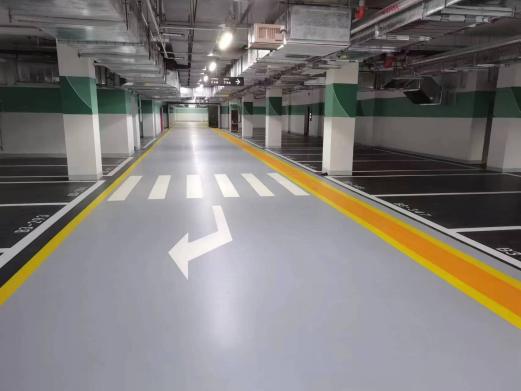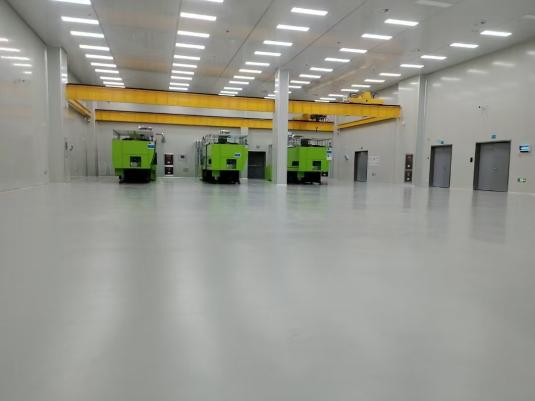The Irreplaceability of Epoxy Resin Floor Adhesive:Scientific Verification and Engineering Practice
In industrial flooring, pharmaceutical cleanrooms, underground parking lots and other scenarios, epoxy resin flooring adhesive has become an undisputed preferred solution due to its multidimensional performance. Its' zero error 'characteristic stems from the deep coupling of material science principles and engineering economics.
Physical performance: full lifecycle stability
Wear resistant and impact resistant, according to ASTM D4060 Taber wear test, the mass loss of epoxy flooring (thickness 2mm) after 1000 cycles under 1kg load is less than 15mg, which is only 1/20 of that of cement flooring. The steel ball impact test (GB/T 1732) shows that its impact resistance strength reaches 50J/cm ², and it can withstand high-frequency rolling of forklifts (200 passes per day, with a lifespan of>10 years). Precision flatness control, self leveling characteristics achieve a flatness of ± 0.2mm/2m (ISO 12560 standard), meeting the anti micro vibration requirements of semiconductor workshops (vibration transmission rate<5%). By adding nano quartz powder (particle size 30-50nm), the Mohs hardness is increased to grade 7.2 (grade 5 for ordinary concrete), eliminating sand and gravel indentation.
Chemical stability: adaptability to extreme environments
Corrosion resistant matrix, cross-linked network density>3 × 10 ㎡¹ chains/m ³ (determined by DSC), can resist continuous immersion in concentrated sulfuric acid (30%) for 72 hours, with no swelling on the surface (mass change rate<0.3%), and gasoline and hydraulic oil permeability<0.01g/(m ² · h) (ASTM D1653 standard). Temperature tolerance: The glass transition temperature (Tg) reaches 120 ℃, and the elastic modulus fluctuates by less than 15% within the range of -30 ℃~80 ℃ (DMA dynamic thermomechanical analysis). The coefficient of thermal expansion (CTE) is as low as 45ppm/℃, and its compatibility with concrete substrates (CTE 10-14ppm/℃) is better than that of polyurethane systems (CTE 180ppm/℃).
Construction Economy: Optimal Solution for Whole Process Cost
Fast delivery capability, using amine curing agent+active diluent system, can walk for 8 hours at 25 ℃ environment (Shore hardness>70), open for heavy traffic 24 hours, and the construction period is only one-third of that of cement flooring. The maintenance cost is approaching zero, the surface tension is less than 35mN/m (GB/T 22237), the stain adsorption rate is reduced by 90%, and the cleanliness can be restored by simply rinsing with clean water. Partial damage can be repaired using spot welding, with material compatibility ensuring repair strength of over 95% of the original structure.
Functional Scalability: Customized Scene Upgrades
Anti static safety, adding carbon nanotubes (0.5% -1.2%) to achieve a surface resistance of 10 ⁶ -10 ⁹ Ω (compliant with ESD S20.20 standard), eliminating the risk of electrostatic breakdown in electronic workshops. Antibacterial medical grade, doped with silver ion modified titanium dioxide (Ag TiO ₂), with an inhibition rate of over 99.9% against Escherichia coli and Staphylococcus aureus (ISO 22196), meeting GMP cleanliness level A requirements.
Environmental Protection and Safety: Comprehensive Compliance Assurance
Low VOC emissions, VOC content in water-based epoxy system<50g/L (GB/T 23986), no residual benzene derivatives detected after curing (GC-MS analysis). Fireproof performance, adding aluminum hydroxide flame retardant (60-80phr), oxygen index>28% (GB/T 2406), reaching B1 level flame retardant standard.
Epoxy resin floor adhesive surpasses alternative solutions such as acrylic acid and polyurethane in more than 20 key indicators, including mechanical strength, chemical resistance, and operation and maintenance costs. Choosing this material is essentially transferring engineering risks to a validated scientific system, fundamentally avoiding hidden costs such as production losses and safety accidents caused by floor failure.









